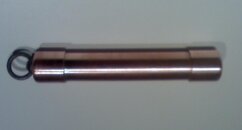The standards and procedures for conducting discovery/try dives vary slightly from agency to agency. However, they all stress the importance of close supervision.
The simple fact that you were able to effect an ascent with your son, seems to illustrate that the instructor concerned was not closely supervising.

Agreed, and the more I read about "Accidents and Incidents" and "Near Misses and Lessons" I couldn't agree more.
I think as a new diver, there is a lot that's going through your mind and people tend to naturally trust those that are supposed to be experts in the field, sometimes too much so, as is evident in a lot of the posts in this section. For the first dive I kind of did that and trusted they were in good hands until midway through the dive. Fool me once, your bad, fool me twice, my bad....needless to say I won't be taking anything for granted anymore.
Every other dive master/instructor we've had would periodically flip over and swim facing the surface to check on us and communicate. I think this does 2 things. One provides the instructor/DM the opportunity to check on their students and make eye contact but also helps to calm the novice divers as it projects a very calm and relaxed environment.
Small point perhaps, but nearly every time I've lagged behind and wanted a dive lead to STFD the best thing I've found is a rattle and even that has been pretty ineffective.
Dive Alerts seem to get bad press here on SB (no idea why) but I for one am interested in some tool or technique in getting a diver's attention who's in front of you. Mostly I've had to fin like a demon to catch up and rattle them on the head to get attention. This kind of vigorous activity would be less than ideal in an OOA situation. I've never found that a lamp is good enough in this kind of situation either except on night dives.
Slightly diversionary post but there is some context.
Our instructor in Cozumel used something similar to the tube and ball bearings I speak of and it was very distinctive and affective. That was our first dive and my wife was a little freaked about a bull shark sighting we heard about just prior to the dive. Consequently she was buddied up with the instructor (who was EXCELLENT I might add!). Anyway, it was a drift dive and she swam like a fish so she'd get ahead of us. At about 25' he'd shake that device and she'd drop to her knees on the sea floor and wait. Funny as heck, but that device was very effective. Now if I can duplicate it and airport security doesn't think it's a bomb:shocked2: all is good.
Apologies if this has been asked or stated before but what was your max depth for this dive?
Thx
No problem at all. I believe there max depth was 35 to 40'. Mine was about 70' as we were diving along the edge of "The Wall" and I dropped over to look in all the nooks and crannies.

Did you report the incident to the dive shop manager? If not, then you still should.
It is hard for dive center management to supervise the activities of their staff underwater..and the feedback of customers is a very useful tool for them. There ARE bad instructors in the industry...but customers need to openly speak out in order for these people to be highlighted.
As a dive center manager myself, I would be seriously concerned if I heard reports like this from customers...and (one way or another) it would not be allowed to continue.
I didn't report it to the manager as I had already spoken to one of them the previous day after I heard about the poor orientation/skills work at the pool. I was not impressed by the responsiveness. As I said I did speak to the instructor myself and I also mentioned it to my certifying instructor.
It's funny, on one of our certification dives there was another group of resort divers that they were having a lot of issues with a couple of the divers (I think they were Japanese and there was a lanquage barrier). I actually have underwater video of one of the instructors towing this guy around a wreck dive by his guages.....uhhhhh, I'm not thinking he fully grasped the bouyancy concept. But, atleast he was under close supervision and was positively bouyant as opposed to negatively!






